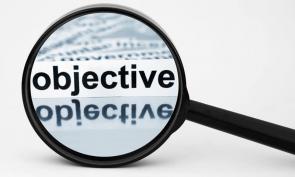
- What should firms consider when interviewing potential hires? Firms should consider asking fundamental questions about a potential hire's law school experiences and how it will provide them with the necessary foundation to enter the current law firm environment. Additionally, strategy is key when interviewing candidates—since they are most likely looking at other potential offers, firms must entice potential hires by demonstrating total commitment to seeing the candidate succeed at their next firm.
- What value should other partners consider when making an offer for a lateral hire? Other partners should consider what value this candidate brings to our firm? Will they attract new business or enable us to take on more complex matters? Additionally, they should consider the advantages that other attorneys onboard bring, such as succession planning and other knowledge, experience, and skills that allow a practice to operate more efficiently.
- What is the benefit of hiring laterals? The benefit of hiring laterals ultimately lies in enabling a firm to serve its clients better by allowing them to quickly expand their practice to other areas and keep up with the demands of the legal market. Lateral transfers succeed when tied to firm strategy—discussed in Law Firm Lateral Transfers: A Strategy for Growth and Success.
- What is important to remember when making a lateral hire decision? It is essential to carry out each step of the process intentionally and thoughtfully, as every step holds pivotal importance when considering adding a legal professional to your team. The result should ultimately be positive growth and long-term success to benefit your firm in future endeavors.
- What should be the overall goal of hiring laterals? The overall goal of hiring laterals should be to enable a firm to serve its clients better by allowing them to quickly expand their practice to other areas and keep up with the demands of the legal market. Additionally, it should bring more advantages, such as succession planning and other knowledge, experience, and skills that allow a practice to operate more efficiently. The benefit of hiring laterals ultimately lies in enabling a firm to serve its clients better.
- Just as firms must avoid hiring missteps, lateral attorneys themselves face challenges outlined in the top 10 career mistakes laterals make.
Defining Your Law Firm’s Needs
As many law firms have experienced, existing clients and their business needs are constantly changing, and as a result, many law firms are determined to expand. A well-thought-out approach to lateral attorney hiring is essential for a successful growth process. Doing so means carefully analyzing each potential hire’s potential practice area strengths, evaluating how they fit into the current firm environment, and many other considerations involved in the lateral hiring process. For any law firm looking to adequately address short-term and long-term goals surrounding lateral associates, defining their needs is essential to their success.Determining The Best Source for Candidates
Identifying the best source for legal placement is essential for any legal firm looking to expand its team. Recruiters are responsible for engaging, evaluating, and recruiting ideal candidates based on legal market trends. To ensure a successful recruitment experience, recruiters must be able to ask the right basic questions and key growth-related questions that help determine what kind of person would best fill a new lateral hire or new position. Missing these steps could result in bad hires that don’t fit the company’s culture. Finding the ideal candidates is key to a firm’s success and should be considered when determining legal placements.Screening Resumes and Conducting Interviews
Screening resumes and conducting interviews for potential lateral hires is a delicate activity many large law firms face while searching for candidates. It is essential to consider potential pitfalls and involve outside partners whenever possible. By having a direct line of communication with potential new hires, firms can judge their qualifications and cultural fit within the firm’s environment. An example of allowing for maximum potential success is to ask fundamental questions about a potential hire’s law school experiences and how it will provide them the necessary foundation to enter the current law firm environment. Additionally, strategy is key when interviewing candidates—since they are most likely looking at other potential offers, firms must entice potential hires by demonstrating full commitment to seeing the candidate succeed at their next firm. New associates can hit the ground running by following What to Do When Starting at a New Law Firm: The Ultimate Guide to Success in Your First 90 Days.What Is the Difference Between an Ideal Candidate Versus a Red Flag Candidate?
In the lateral partner questionnaires, both categories of candidates have comparable average years of experience, billing rates, and billable hours. However, the red flag candidates showed a higher response in some metrics. On average, they listed 18.4 portable clients compared to 9.6 portable clients for ideal candidates; and estimated their portable books of business at $8.2 million compared with ideal candidates. About firm culture, red flag candidates tended to report “poor” or “fair” ratings, while ideal candidates mostly reported, “excellent.”Red flag candidates also tend to have more of a transactional mindset and limited strategic planning capabilities. They may be better suited for short-term engagements where the goal is to meet budget targets and produce deliverables. Ideal candidates have more of an innovative mindset, focusing on long-term client relationships and strategic vision for their practice. They are better equipped to take on complex engagements that require creative problem-solving.
Regarding management style, red flag candidates tend to focus more on individual performance than on their team’s performance. They may need to be more effective at leading a group of lawyers and managing the work product. Ideal candidates, on the other hand, tend to have stronger leadership skills and are better equipped to guide an entire practice group or specialize in complex litigation.
When comparing an ideal candidate versus a red flag candidate, it is essential to consider their skills and experience, firm culture, strategic mindset, and management style. Ideal candidates typically have a broader skill set and are better equipped to handle complex engagements. Red flag candidates may be more transactional and focus on short-term deliverables.
So, when looking for lateral partners who can provide value to your firm, it is important to consider if they are a red flag candidate or an ideal candidate. With the right fit, lateral partners can bring in new opportunities and help grow the firm’s business.




